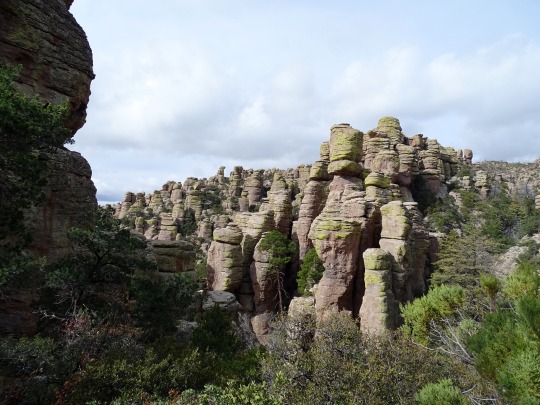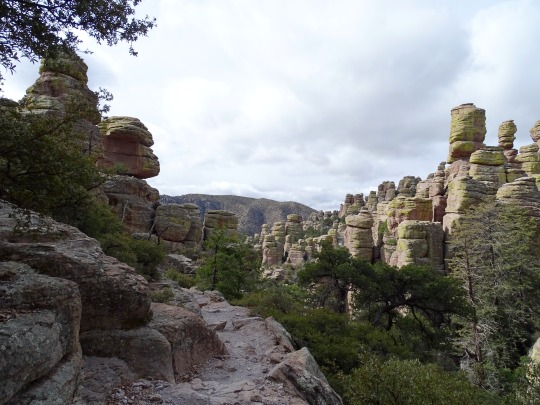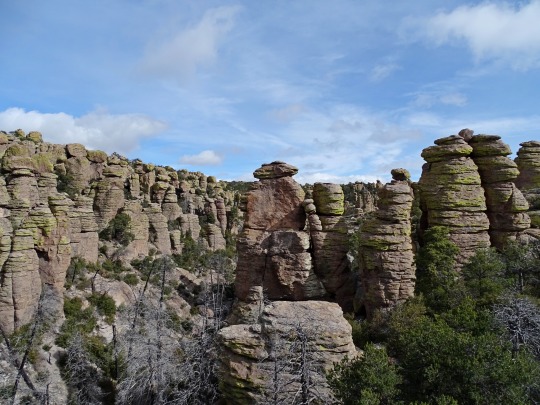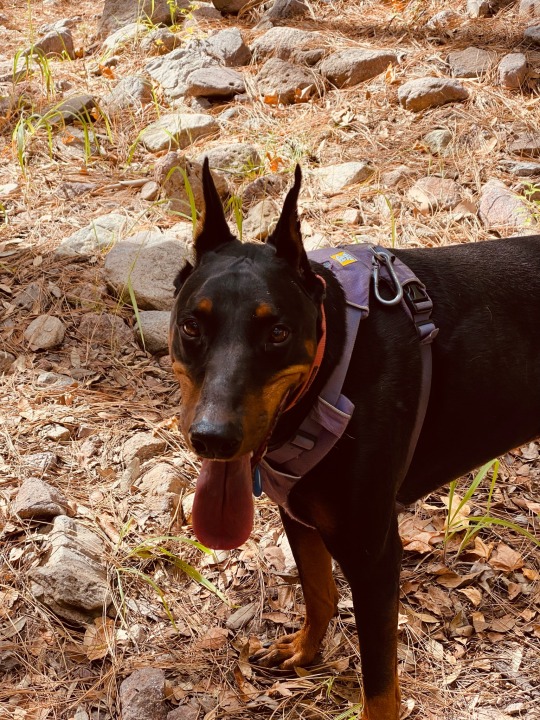#Chiricahua
Explore tagged Tumblr posts
Text

Chiricahua man, Ma Tut Seh, United States of America, by Craig Varjabedian
#chiricahua#united states of america#north america#america#folk clothing#traditional clothing#traditional fashion#cultural clothing
145 notes
·
View notes
Text

Naiche - Chiricahua Apache
Naiche 1856-1919
Naiche, the youngest son of Cochise, was born in 1856. His mother, Dos-teh-seh, was the daughter of Mangas Coloradas. As a young man he took part in raids on white settlers and in 1872 was with his father when he met Brigadier General Oliver Howard. This resulted in the establishment of the Chricahua Reservation in Arizona ... Taza, Cochise's older son, became chief when his father died in 1874. Two years later Taza died and Naiche became the leader of the Chiricahuas Apaches ... In September 1880, Naiche joined Geronimo and Juh in an attempt to lead their people from the San Carlos Reservation into the Sierra Madre. However, in 1883 General George Crook managed to persuade the Apaches to return to Arizona ... Naiche and Geronimo broke out again in May 1885. Once again General Crook was sent after them. Naiche lived in the Sierra Madre until he was caught by Crook in September, 1886. Natchez now joined the all-Indian "I" Company, 12th Infantry at Fort Sill, Oklahoma ... In 1897 Naiche worked as a scout for Captain Hugh Scott and the 7th Cavalry ... After leaving the army he moved to the Mescalero Reservation in New Mexico ...
Naiche died on 16th March, 1919
120 notes
·
View notes
Text

At his camp in the Sierra Madre at Canon de los Embudos, Mexico, March 25, 1886; shows Chuhuahua (prisoner of War), Calle, and Geronimo. - Fly - 1886
11 notes
·
View notes
Text
Chiricahuas Redux

I took The Monsters camping this past weekend. They are seen in the photo chilling in their new tent. After our soaking last October they insisted there would be no more sleeping in the open.
Anyway. . . We had a lovely time. We were a mile-and-a-half from the nearest campers. Less than a dozen people rolled thru in three full days. Our campsite faced a stoney brook that would have inspired Bob Ross. And I finally saw just how much it takes to get The Monsters to crash. A lot. In short: Fun!
41 notes
·
View notes
Text
The lightning flashes overhead and the thunder rolls over us. On the back porch, joint in hand, lighter in hand. Water in hand.
It hasn't rained all summer, won't for another month, long after I've left. So all we have is the thunderstorm, parked high over the mountain, and the desperate hope for just a little water.
There won't be.
The sun is setting. The sky is pink and orange and yellow where the sun hits the clouds. The desert air is dry and hot even though it's almost dusk.
You're next to me. In the ratty folding chair my mother bought for my childhood baseball games. You light the joint, because it's always you who lights the joint, and we pass it back and forth under the edge of storm clouds that refuse to break, basking in the dying light.
We enjoy each other's company. Friends. Family. The dread of what comes next hangs over us like our judgment. I'm leaving. Again. Again and again and again. And you know that soon I'll stop coming back.
We don't talk about it. Not tonight. Instead you turn and say "You should go to the chiricahua's with me next spring." And I say "Yeah, that sounds great, let's try and make it happen."
We will never go to the chrircahua's. You already know that. You know that I've picked something else. A different home. A different family. That I'm in the midst of chasing it. That I'm leaving you behind.
You've already forgiven me for it. It makes me bite and shout and scream. You shouldn't forgive me for leaving you here. On this back porch. In the ten year old lawn chair. It this pit of a home that sinks it's claws into you and does it's best to never let you leave.
The place that you became yourself is only the place I grew up. My becoming lies elsewhere. You told me to find it and never let it go. You know it means letting you go.
We sit with it. The sun sets. The colors fade to deep purples and blues. The parts of the sky not blocked by the storm are dotted with stars. Every few seconds, another distant flash of lightning lights up the yard.
No rain. No water.
I stand up to feed the dogs, you finish off the joint and take out your pen.
We are living through this. The ending of us. Our friendship will not sustain itself through the thousands of miles I intend to put between us. I will always love you, and you will always love me. We will lose our common ground, our inside jokes. A lifetime of history drowned out by the lifetime of history I will make away from you.
It rots in me. The guilt and anger. The shame. Of not being strong enough to put family first. To selfishly chase my dreams when they lead so terribly far away.
But tonight the air is dry and warm, the moon is shining behind the clouds, and the dogs run circles around our feet.
We know it is ending. We drag ourselves through every moment anyway, sure the memories will be worth it when I am gone.
2 notes
·
View notes
Photo



Chiricahua National Monument, Southern Arizona.
Explore this fabulous park in my blog post: https://wanderingjana.com/chir
#chiricahua#chiricahua national monument#arizona#southern arizona#national park service#national park#findyourpark#optoutside#hiking#nature#landscape#national monument#wanderlust#hoodoos#wanderingjana
19 notes
·
View notes
Text

No-talq, circa 1883
~
Chiricahua Apache
#notalq#No-Talq#arizona#newmexico#apache#chiricahua#warmspringsapache#1883#1880s#19thcentury#apachewars#battleofapachepass#nativeamericans#trueamerican#firstamericans
6 notes
·
View notes
Text

Chiricahua National Monument in Willcox, AZ.
5 notes
·
View notes
Photo

De izquierda a derecha: Eva Geronimo (hija de Geronimo), Geronimo, y Emily Chihuahua. Apaches Chiricahuas. Fotografía tomada antes de 1909, pudiera ser por H. H. Clarke.
#geronimo apache#chiricahua#chiricahua apache#apache#native#natives#american indian#nativeamericans#Native America#nativo#nativos
5 notes
·
View notes
Text
Scarcity: What Tipped Me Off {We Shall Remain + Oliver Enjady}
In roughly 2013, I watched something I’ll never forget. It was somewhere in the We Shall Remain documentary, part of PBS’s American Experience series.
But I’m 95% sure that the speaker was Oliver Enjady. In the film, he was listed as a Chiricahua Apache, but I’ve also seen him identified as Mescalero.
(Mr. Enjady, if this was not you, I sincerely apologize. You were quite memorable in We Shall Remain, and I also sincerely enjoy your paintings—and the song Lyla June Johnston wrote based on your words.)
Anyway, moving on, here’s a paraphrased version of what was said:
In a healthy village, before the Europeans came to colonize this continent, barring famine or disaster, all needs were met in indigenous villages, because everyone had different talents. If an individual had more skill in gathering food from the plants around them, they take what they needed and harvest what was appropriate; then they would share the bounty with others in the village. A talented hunter may kill more animals than he could personally consume, but he would share with those in the village who didn’t have enough, like a widow and her children.
Now, if a hunter were to come in and hold on to more than he needed, that didn’t make any sense. That food would go to waste. Therefore, it was considered a sickness among his people, and the rest of the village would look after him and try to treat his illness.
{In my memory, the video’s graphic was quite powerful, because the graphic showed the hunter literally on top of a hill made of all his food, which looked a bit like a painted hambone. I think the food even started to rot.}
Now, when the Europeans first came to this land, it was well known and understood among the people already living on this continent: not only did the white men HAVE this sickness, they were rife with it.
Here is the reason why this isn’t a direct quote: My Memory Doesn’t Match.
#culture#scartending#scarcity#scarcity scar#quote#Chiricahua#Chiricahua Apache#Apache#native people#indigenous#native americans#cultural scars#cultural studies#colonization#imperialism#Europeans#turtle island#quotes#Oliver Enjady#Lyla june Johnston
2 notes
·
View notes
Text

May I introduce some of you to hoodoo? Different mechanism, but one of my favorite Southwest USA topography.
I’ve made this post like six times but it still fucks me up the China’s mountains just look like that. Like I spent decades thinking it was stylistic but no, they just have different mountains over there.
133K notes
·
View notes
Text

THE CHIRICAHUA APACHE NANTAN, GOYATLE (GERONIMO) IN WAR CAP :
Bedonkohe ...
Geronimo was born in what is today Arizona in the upper Gila River country on June 16, 1829. His birth name was Goyahkla, or "one who yawns." He was part of the Bedonkohe subsection of the Chiricahua tribe of Apaches, a small but mighty group of around 8,000 people ...
Apache nantans led from the front, so he might just be checking up on the column behind him. Many Apaches think he caused unnecessary decimation of the Chiricahua people; that he remained in the field too long, causing avoidable deaths. This nantan was blinded by revenge on the Mexicans. Full disclosure: he came home from what would pass for a shopping trip one day in 1851, and found his entire camp slaughtered by Mexican troops from Janos, Mexico. The dead included his mother Juana, wife Alope, and their three infant daughters. That Empire State Building sized horror, fell on one man all on the same day. So, you be the judge.
By 1884, he was in a bind. It became very difficult to recruit warriors from the reservations, as was the custom in earlier years. He even found himself competing with the US Cavalry for Apache men. The Army offered adult males jobs as scouts. Every scout was a warrior, but not every warrior became scouts. Those Army scouts were the albatross around his neck. They knew everything about him, the tribe and its refuges on both sides of the border. Every water hole, hiding place, arms cache, cave warehouses etc., were known to them. They would destroy winter stores piled up from summer operations in Mexico and Arizona/New Mexico. They essentially broke his back. By 1886, the pickings reached an all time low. He boiled down to 19 warriors; even resorted to child warriors. There were no bargaining chips left on the table from the 1884 talks. Geronimo was painted into a corner marked "unconditional surrender" ... When he finally handed over his rifle to General miles in September of 1886, there were only 38 people left in his band; half of them warriors. Deportation to Oklahoma, and what turned out to be a life sentence for him followed ...
The Chiricahuas served 27 years of incarceration 💔, before being released in 1913. It remains the longest confinement in US Military history ...
RIP Nantan Goyatle.
15 notes
·
View notes
Text
Chiricahua National Monument
2010 was the last time I was in Chiricahua, and it wasn’t pleasant. I had major health issues, and I ran into my first snake on the trail, which only added to my anxiety and stress. I knew that my return this time around would be more meaningful, carefree and adventurous. At least I hoped so… I take an early morning drive out to the National Monument, and stop at the first hiking trail on the…
0 notes
Text

portrait of warm springs brave
1 note
·
View note
Text
That Little Spot in the Chiricahuas

This building along Pine Creek survived a fire and a flood. What else is part of its story? We may never know.
Every large Ponderosa pine in Pinery Canyon carries the scars of a fire. The fire occurred in 2011. It burned for a month. It consumed a quarter-million acres. It cost $50 million to control. If you call the destruction of almost an entire mountain range control.
But that was not the end of the beating Pinery Canyon would take. Arid lands recover slowly. In fact, the Chiricahuas will not be the same again in my lifetime. Or my children’s lifetime. So when monumental monsoon storms hit the range in 2021 very little dense vegetation was available. And the soil was not readily able to percolate. I wasn’t there to see the trickle of water in Pine Creek become a river. But I saw the aftermath. Again in 2022 a series of Noachian storms pounded the mountain. What 2021 started 2022 finished. Our favorite little camp barely survived. In fact, the road to it may yet completely collapse.
And yet we keep going back. Why? The trees may be scarred but they are still standing. The creek bed may be a jumbled pile of rocks, but water—even if only a trickle—still flows. The largest run of turkeys I’ve ever seen practically strolled through our camp once. Slow quiet steps reveal Coues whitetail deer among the trees. Stellar jays sometimes fly among the branches. Those things make Pinery Canyon beautiful. But they also tell a story. And there is more of a story. Remnants of Methodist Camp still exist. And, further along both ends of the three-mile stretch we love, there are artifacts of other stories. The stories, and the bits of them we continue to discover, make the canyon interesting.
Finally, it is just a tiny bit more remote. The dirt road over Downing Pass is just long enough, and just rough enough to deter some of the thundering crowd. I like that because, with a little care and forethought, I can let The Monsters run loose. In April no one was camped there. This October I had neighbors. But you hardly heard a peep from them.
Beautiful. Quiet. Almost on the edge of remote. And with a story waiting to be teased together. Those things keep us going back to that little spot in the Chiricahuas.


1 note
·
View note